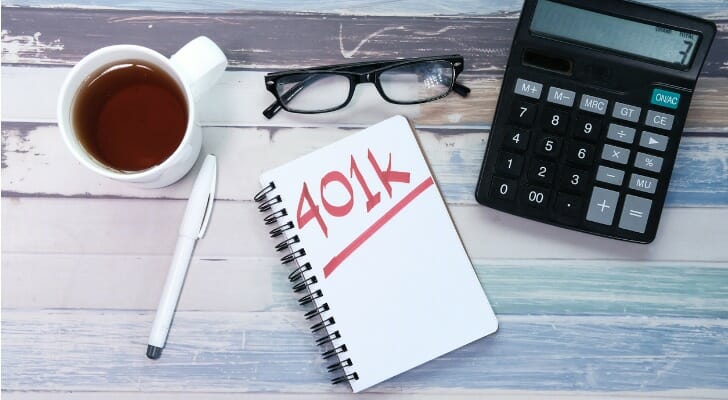 When you need to borrow money to consolidate debt, pay for home renovations or pay for other expenses, 401(k) loans and personal loans are two options you may consider. A 401(k) loan allows you to borrow from your retirement savings, and then pay yourself back with interest. With a personal loan, you’re borrowing from a lender rather than your retirement. Both have pros and cons. Understanding the differences between a 401(k) loan vs. personal loan can help you decide on the best way to borrow.
When you need to borrow money to consolidate debt, pay for home renovations or pay for other expenses, 401(k) loans and personal loans are two options you may consider. A 401(k) loan allows you to borrow from your retirement savings, and then pay yourself back with interest. With a personal loan, you’re borrowing from a lender rather than your retirement. Both have pros and cons. Understanding the differences between a 401(k) loan vs. personal loan can help you decide on the best way to borrow.
Going into debt can entail some risks so you’re well advised to consult with a financial advisor about how best to do it.
What Is a 401(k) Loan?
A 401(k) loan is a loan you take out against the balance in your 401(k) plan at work. Not every employer allows 401(k) loans. And those that do may have specific rules regarding what you can borrow. But typically, you can take a 401(k) loan of up to $50,000 or 50% of your vested balance, whichever is less. A 40k(k) loan can have a maximum repayment term of up to five years.
So what can you use a 401(k) loan for? The good news is, that these loans are flexible meaning you can use the money for virtually any purpose, including:
- Funding home renovations or repairs
- Paying for a down payment on a home
- Consolidating high-interest debt
- Covering outstanding medical bills
- Paying higher education expenses for yourself, spouse or children
- Paying medical bills
- Starting a business
- Covering day-to-day living expenses
When you take out a 401(k) loan, you have to pay it back with interest. But the interest rate may be well below what you’d pay with a credit card or other types of loans. Repayment is typically made through paycheck deductions so you can pay your loan balance down automatically each payday.
What Is a Personal Loan?
A personal loan is money you borrow for personal expenses. You can find personal loans offered by banks and credit unions or online lenders. Personal loans can be unsecured, meaning they don’t require any collateral. Or they may be secured by a savings account balance or certificate of deposit account. This is usually the case with credit builder loans.
In terms of what you can use personal loans for, the list includes the same things you could use a 401(k) loan for. A popular use for personal loans is debt consolidation. If you have several credit cards with steep APRs, for example, you could get a low-interest rate personal loan to pay them off. You’d then make one payment to your personal loan lender going forward. The result is that you could save money on interest while potentially trimming some time off your debt repayment.
Personal loans do charge interest and what you’ll pay can depend on several things, including:
- How much you need to borrow
- Your credit history, credit scores and income
- The lender’s loan requirements
There’s no universally accepted minimum credit score that’s required for a personal loan. But the higher your credit score, the easier it may be to get approved and secure the best interest rates. A lower score, meanwhile, may limit your options to bad credit personal loans which can be more expensive.
401(k) Loan vs. Personal Loan: Which Is Better?
 Whether it makes more sense to choose a 401(k) loan or a personal loan can depend on how much you need to borrow and what you need the loan for. This is where it helps to weigh the pros and cons on both sides to see which one is better suited to your financial situation.
Whether it makes more sense to choose a 401(k) loan or a personal loan can depend on how much you need to borrow and what you need the loan for. This is where it helps to weigh the pros and cons on both sides to see which one is better suited to your financial situation.
401(k) Loan Pros
Here are the most common benefits of a 401(k) loan:
- You may be able to qualify for a lower interest rate than you could with a credit card or personal loan.
- You’re paying interest back to yourself, rather than to a bank or lender.
- There’s no credit check required and a 401(k) loan won’t show up on your credit report.
401(k) Loan Cons
Here are the downsides of a 401(k) loan:
- If you fail to repay a 401(k) loan, the entire balance can be treated as a taxable withdrawal under IRS rules.
- Separating from your job may mean having to pay any remaining loan balance due in a lump sum.
- Taking money from your 401(k) means you’re missing out on the power of growth through compounding interest.
A 401(k) loan can be convenient but it’s important to consider the bigger picture in terms of cost. While you might not pay loan fees, you could be shortchanging your retirement savings by taking money from your plan. While you’re paying it back with interest, the interest you pay may be less than the interest your savings could have earned if you’d left it alone.
There’s also the possibility of having to pay income taxes or tax penalties on a 401(k) loan if you’re not able to pay it back in time. The IRS can treat the entire loan balance as a taxable distribution and if you’re under age 59.5, a 10% early withdrawal penalty also applies. This could make a 401(k) a very expensive way to borrow, depending on how much you take out and what tax bracket you land in.
Personal Loan Pros
Here are the most common personal loan benefits:
- Borrow money without taking anything away from your retirement savings.
- Personal loans can offer flexible repayment terms to fit your budget.
- A good credit score could help you to qualify for a low interest rate.
Personal Loan Cons
Here are the most common personal loan downsides:
- You’re paying interest to a lender and the higher the rate, the more you’ll pay over time.
- Some personal loans may charge origination fees or prepayment penalties if you decide to pay the loan off early.
- The amount you could borrow with a personal loan may be less than what you could get with a 401(k) loan.
Personal loans allow you to get funding when you need it without shrinking your retirement savings. And if for some reason you can’t repay the loan on time, you don’t have to worry about the IRS assessing tax penalties.
But it’s important to shop around and compare personal loan lenders before you borrow. Specifically, it’s helpful to look at loan repayment terms, loan limits, credit score requirements, interest rates and fees before committing to a lender. You can also take time to calculate your estimated personal loan payments to get a feel for how well it will work for your budget.
Bottom Line
 Whether you choose a 401(k) loan or a personal loan to meet your borrowing needs is an important decision because of how it can affect your retirement savings. If you have the option to qualify for a personal loan at a low interest rate, consider how much you’ll pay versus how much growth you could be missing out on by choosing a 401(k) loan instead. This can help with deciding which loan option makes the most sense.
Whether you choose a 401(k) loan or a personal loan to meet your borrowing needs is an important decision because of how it can affect your retirement savings. If you have the option to qualify for a personal loan at a low interest rate, consider how much you’ll pay versus how much growth you could be missing out on by choosing a 401(k) loan instead. This can help with deciding which loan option makes the most sense.
Retirement Planning Tips
- If you’re experiencing financial hardship, you might consider whether a hardship withdrawal from your 401(k) is a good idea. Not every employer allows hardship withdrawals. And among those that do, you’ll need to meet certain requirements to qualify. But taking a hardship withdrawal means you wouldn’t have to pay the money back, though you would still be subject to taxes.
- Consider talking to a financial advisor about whether it’s better to take a 401(k) loan vs. personal loan when you need funding. Finding a financial advisor doesn’t have to be hard. SmartAsset’s free tool matches you with up to three vetted financial advisors who serve your area, and you can have a free introductory call with your advisor matches to decide which one you feel is right for you. If you’re ready to find an advisor who can help you achieve your financial goals, get started now.
Photo credit: ©iStock.com/Prostock-Studio, ©iStock.com/towfiqu ahamed, ©iStock.com/William_Potter